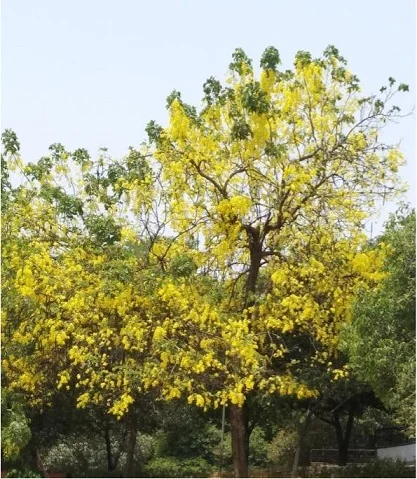Aragvadha
By Dr.Vasudha Sharma | May 19, 2022
Botanical Name: Cassia Fistula
We have all witnessed the beauty of Golden shower trees in bloom. Amaltas as we know it, is also called 'purging cassia' for the effect of its fruit when consumed. Fruit pulp is a safe laxative because of its mild purgative action and can be used in elderly and children.

Chemical Composition
Fruit pulp contains anthraquinone, sugar, gluten, calcium oxide, alkaloids, and a colouring agent. Stem Bark contains 10-20% tannin. Root bark contains anthraquinone. Leaves and flowers contain glucoside.
Qualities
Sweet, heavy and unctuous in quality. Pacifying pitta and being mild purgative helps in removal of pitta and kapha in the digestive channels.
Effect
It is described as a herb having effect on pain and inflammation ( shotha hara and vedanasthapana).
Parts Used
Fruit pulp is the most used part. Stem bark and root bark are also used. The flower is used as a vegetable in some regions.
Usage of Plant Parts
- Piece of bark collected and cleaned, added to 2 cups of water, boiled and reduced to half can be filtered and consumed. This decoction relieves constipation and heaviness of the stomach and can also be useful in pinworm infections in children.
- Tender leaf buds or yellow coloured flowers can be prepared to the soup consistency with salt, jaggery and pepper. It will serve as a great appetiser, restoring taste in case of dyspepsia.
Popular preparations in Ayurveda would be Aragwadhakashaya and Aragwadharista.
Among all the herbs used for purgation Amaltas is the best mild purgative. It can be used easily in the elderly, children, and in people with low digestive capacity. It helps to relieve Ama ( toxins ) in the body and cleanse the digestive tract.
Article By :
Dr.Vasudha Sharma



